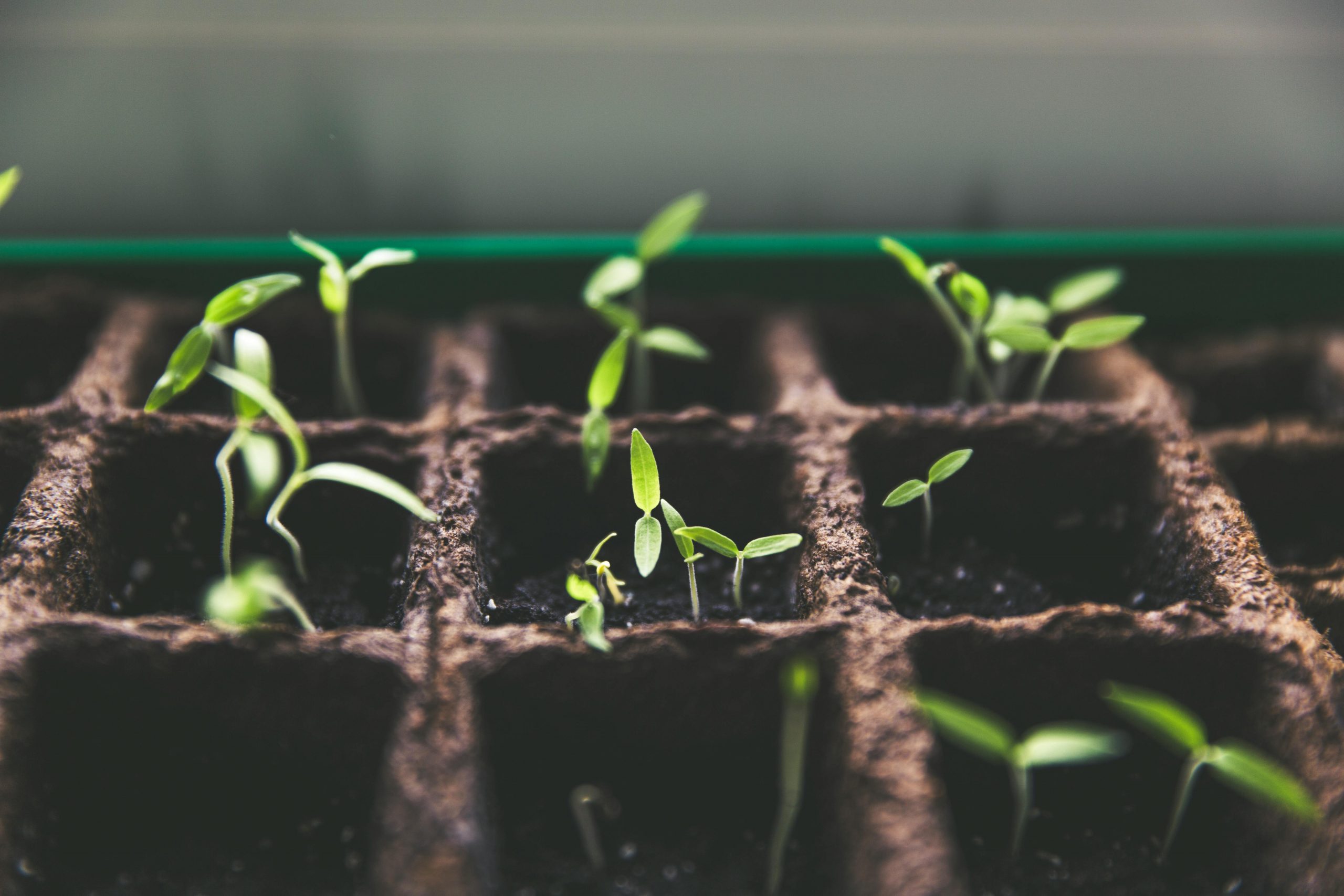Here at Genesis Gardens, we believe there’s a gardener in everyone. Spring, with its promise of new beginnings, is the perfect time to get your hands dirty and embark on the rewarding journey of growing your own food and flowers. But before the joyful chaos of the abundant summer harvest, there’s a crucial first step: sowing seeds indoors.
For many new gardeners, the idea of starting seeds indoors might seem daunting. Fear not! With a little planning and this handy guide, you’ll be nurturing tiny seedlings into thriving plants in no time.
Why Sow Indoors?
There are several advantages to starting seeds indoors, especially in the changeable UK climate:
- Extend your growing season: Get a head start on warm-weather crops like tomatoes, peppers, and aubergines by giving them a few weeks of growth indoors before the last frost.
- Protect delicate seedlings: Shield young plants from unpredictable spring weather, such as sudden frosts or cold snaps.
- Greater control over germination: Provide consistent warmth, moisture, and light for optimal seed germination rates.
- Wider variety of options: Access a much broader selection of seeds compared to what’s readily available as pre-grown plants.
The Seed-Starting Essentials
Now that you’re convinced about the benefits of sowing indoors, let’s gather the essentials:
- Seeds: Choose high-quality seeds suitable for your climate. Look for varieties labelled “F1 hybrid” for reliable germination and strong growth.
- Seed trays or pots: Shallow containers with drainage holes are ideal. Seed trays with individual cells allow for easy transplanting later.
- Seedling compost: Opt for a good quality, well-draining, and sterile seed compost specifically designed for seedlings.
- Watering can with a rose attachment: This allows for gentle watering without disturbing the delicate seeds.
- Clear plastic dome or propagator lid (optional): Helps retain moisture and warmth around the seedlings.
Sowing Your Seeds: Step-by-Step
- Fill your seed trays or pots: Moisten the seedling compost slightly and fill your containers to just below the rim. Firm the compost gently to create a smooth surface.
- Sow your seeds: Seed packet instructions will specify the sowing depth and spacing required for each variety. For tiny seeds, a seed spreader can be helpful for even distribution.
- Cover the seeds lightly: Use a thin layer of compost to cover the seeds according to packet instructions.
- Water gently: Use a watering can with a rose attachment to evenly moisten the compost without dislodging the seeds.
- Light and warmth: Place your seed trays or pots in a warm, well-lit location. A sunny windowsill is ideal, but avoid direct midday sun as it can scorch seedlings.
- Maintain moisture: Keep the compost consistently moist but not waterlogged. A clear plastic dome or propagator lid can help retain moisture in the early stages.
- Watch for germination: Seed germination times vary depending on the variety. Be patient and keep the compost moist.
- Thinning seedlings (optional): Some seeds may germinate too close together. Once seedlings have a few sets of true leaves, gently thin them out as per packet instructions.
- Harden off before transplanting: Once the danger of frost has passed and your seedlings are well-established, gradually introduce them to outdoor conditions for a week or two before transplanting.
Easy Winners: Vegetables, Herbs and Flowers to get you started
Now for the fun part – choosing what to grow! Here are some beginner-friendly options perfect for UK gardens:
- Vegetables: Tomatoes, peppers, aubergines, courgettes, chillies, lettuce, spinach, beetroot, Swiss chard.
- Herbs: Basil, coriander, parsley, chives, mint, oregano, thyme.
- Flowers: Marigolds, nasturtiums, calendula, sunflowers, cosmos, sweet peas, poppies.
Remember: Starting seeds indoors is a process, but with a little care and attention, you’ll be nurturing healthy seedlings into vibrant plants ready to grace your garden and fill your plate. So, embrace the joy of spring, get sowing, and watch your garden flourish!
Top Tips from Genesis Gardens:
- Label your seed trays clearly to avoid any confusion as your seedlings grow.
- Rotate your seed trays regularly to ensure even light distribution.
- Don’t overfeed seedlings. Wait until they have a few sets of true leaves before applying a weak liquid fertiliser.
- Enjoy the process! Seedlings are fascinating to watch grow, and nurturing them is a rewarding experience.
With a little dedication and these helpful tips, you’ll be well on your way to becoming a confident seed-starting pro.
If you’re looking for more personalised advice or assistance in creating a wildlife-friendly garden, don’t hesitate to contact us here at Genesis Gardens. We offer a range of gardening design and maintenance services to help you achieve your dream outdoor space. Let’s work together to cultivate a beautiful and sustainable garden that flourishes throughout the seasons.

